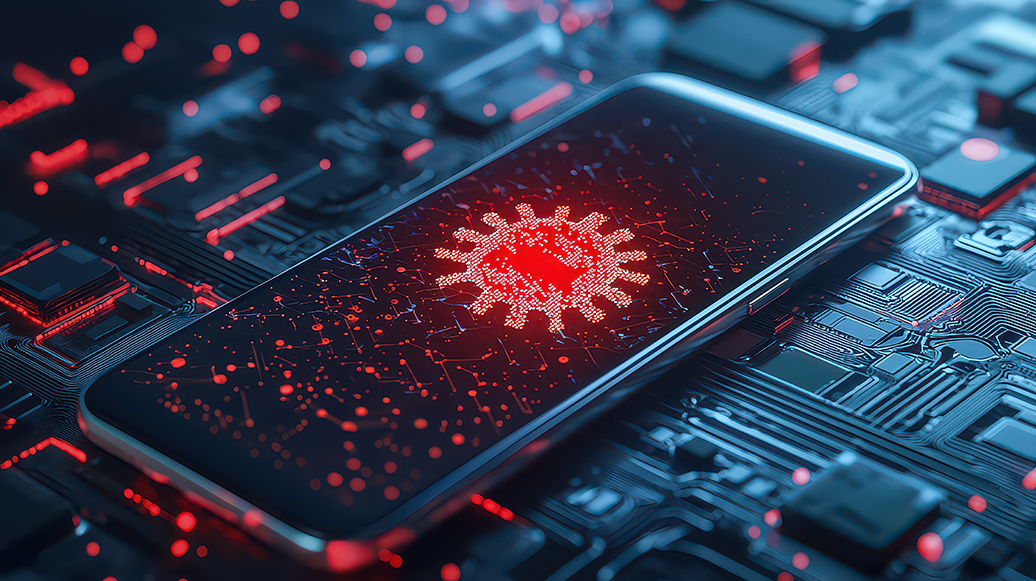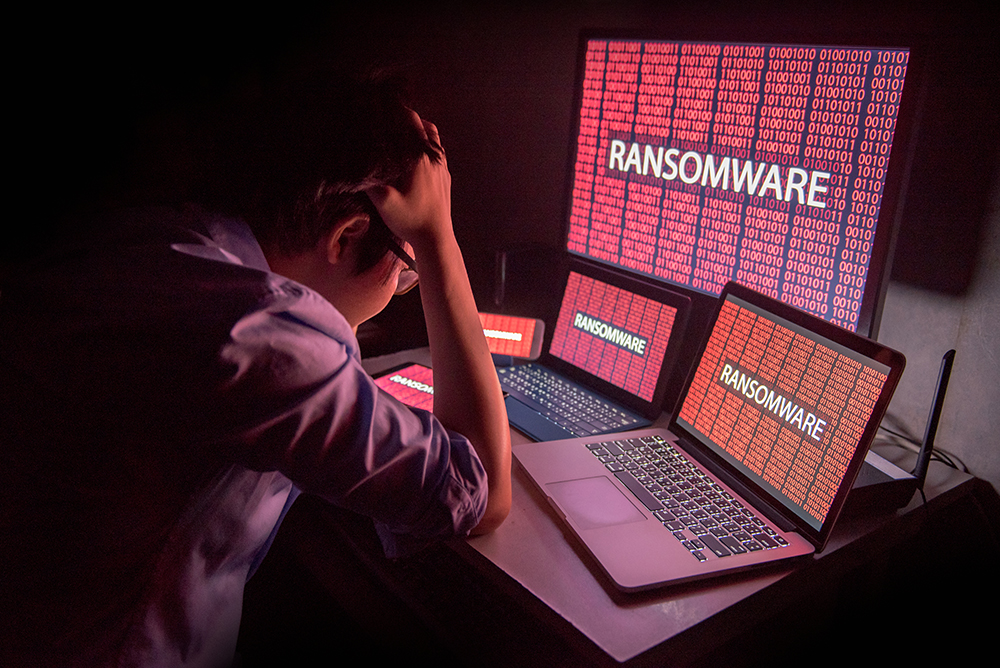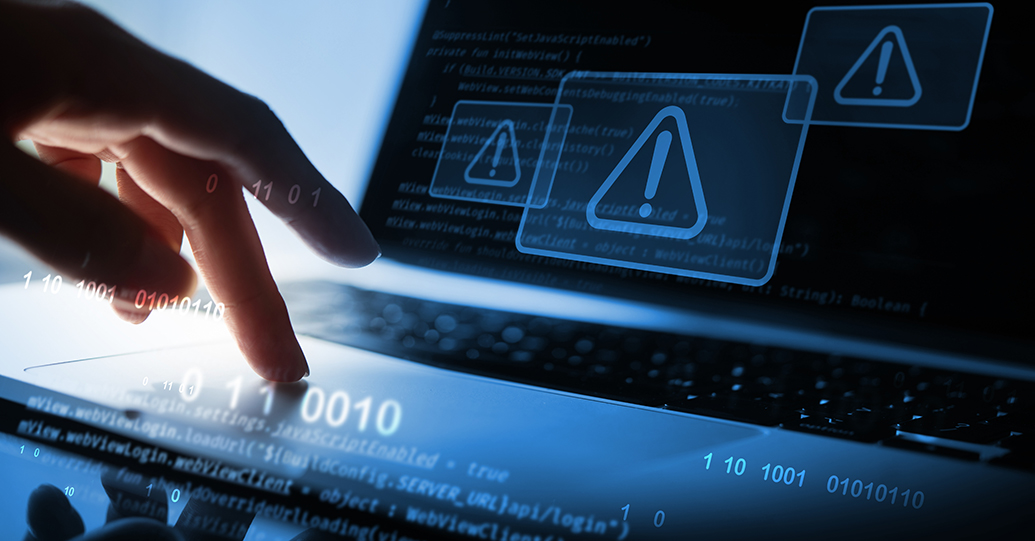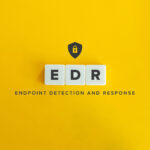A Proactive Defense is the Best Offense Against Ransomware
In an era where our lives are intricately woven into the digital fabric, the threat of ransomware looms like a shadow over our online existence. It’s a modern-day heist that doesn’t just threaten to steal but to imprison our digital assets, demanding a king’s ransom for their release. This blog post delves into the dark world of ransomware and shines a light on the proactive defenses that can keep your digital life secure.

The Rise of Ransomware
Ransomware is not a new player in the cybercrime arena, but its tactics have evolved. It’s become more sophisticated, more targeted, and more devastating. The recent surge in high-profile attacks has shown that no one is immune—from large corporations to small businesses, hospitals, schools, and even individuals.
Historical Context
Ransomware has been around since the late 1980s, but its impact has significantly increased with the advent of cryptocurrencies, which provide an anonymous payment method for cybercriminals. The first known ransomware attack, the AIDS Trojan, spread through infected floppy disks. In contrast, modern ransomware, like WannaCry and NotPetya, spreads rapidly across networks, causing widespread disruption.
Recent Trends
Recent trends indicate a rise in ""double extortion"" tactics, where attackers not only encrypt data but also threaten to publish sensitive information if the ransom is not paid. This added layer of extortion increases the pressure on victims to comply with demands, further amplifying the impact of these attacks.
Understanding the Threat
At its core, ransomware is a type of malware that encrypts a victim’s files. The attackers then demand a ransom, typically in cryptocurrency, for the decryption key. But it’s not just the financial loss that bites; it’s the downtime, the data breach, the loss of customer trust, and the potential legal repercussions that follow.

How Ransomware Works
1. Infection Vector: Ransomware often gains access to systems through phishing emails, malicious downloads, or exploiting vulnerabilities in software.
2. Encryption: Once inside, it scans the system for valuable data and encrypts it, rendering it inaccessible to the user.
3. Ransom Demand: The victim is presented with a ransom note, typically demanding payment in cryptocurrency in exchange for the decryption key.
4. Payment and Decryption: If the ransom is paid, the attackers may (or may not) provide the decryption key. There is no guarantee that paying the ransom will restore the encrypted data.
Consequences of Ransomware Attacks
The impact of a ransomware attack can be devastating:
- Financial Loss: Beyond the ransom itself, costs include downtime, lost revenue, and the expense of recovery efforts.
- Operational Disruption: Critical systems and data become inaccessible, halting business operations.- Data Breach: Sensitive information may be exposed, leading to regulatory fines and loss of customer trust.
- Reputational Damage: Public disclosure of an attack can damage a company’s reputation and erode stakeholder confidence.

Building Your Cybersecurity Arsenal
The best defense against ransomware is a good offense. This means implementing a multi-layered cybersecurity strategy that includes regular software updates, advanced threat detection systems, employee training, robust backup solutions, and a solid incident response plan.
Essential Cybersecurity Measures
1. Regular Software Updates: Ensure that all systems and applications are up-to-date with the latest security patches. Outdated software can be easily exploited by attackers.
2. Advanced Threat Detection: Deploy advanced threat detection systems that use machine learning and behavioral analysis to identify and block ransomware attacks in real-time.
3. Employee Training: Conduct regular cybersecurity training for employees to recognize phishing attempts and other common attack vectors.
4. Robust Backup Solutions: Implement a comprehensive backup strategy that includes regular, automated backups stored offline or in a secure cloud environment. Ensure that backups are tested and can be restored quickly.
5. Incident Response Plan: Develop and maintain a detailed incident response plan that outlines steps to take in the event of a ransomware attack. This plan should include roles and responsibilities, communication strategies, and recovery procedures.
The Human Element
Technology alone won’t save us. The human element is often the weakest link in cybersecurity. Phishing emails, malicious links, and social engineering tactics are common entry points for ransomware. Educating employees on these threats and fostering a culture of cybersecurity awareness is crucial.
Employee Awareness and Training
- Phishing Simulations: Conduct regular phishing simulations to test and reinforce employee awareness.
- Security Policies: Establish clear security policies and procedures for handling sensitive information and responding to potential threats.
- Reporting Mechanisms: Create easy-to-use mechanisms for employees to report suspicious activities or potential security incidents.

Staying Ahead of Ransomware Threats
Ransomware may be a formidable foe, but it’s not invincible. By understanding the threat, preparing our defenses, and staying vigilant, we can protect our digital lives from these cybercriminals. Here are some additional strategies to stay ahead of ransomware threats:
Proactive Monitoring and Threat Intelligence
- Continuous Monitoring: Implement continuous monitoring of networks and systems to detect unusual activity that could indicate a ransomware attack.
- Threat Intelligence: Subscribe to threat intelligence feeds to stay informed about the latest ransomware tactics, techniques, and procedures.
Collaboration and Information Sharing
- Industry Collaboration: Participate in industry-specific cybersecurity forums and information-sharing groups to collaborate on best practices and share insights on emerging threats.
- Government Resources: Utilize resources provided by government agencies, such as the Cybersecurity and Infrastructure Security Agency (CISA), for guidance and support in defending against ransomware.
Ransomware is a persistent and evolving threat in the digital age. However, with vigilance, education, and a proactive approach to cybersecurity, individuals and organizations can protect themselves from these deceptive attacks. Knowledge is power, and preparation is key. By building a comprehensive cybersecurity arsenal, staying informed about emerging threats, and fostering a culture of awareness, we can navigate the dark world of ransomware and safeguard our digital lives."
Recent Blogs
Think of traditional antivirus as a gate guard with a laminated binder of faces. If the intruder matches a mugshot, they’re denied. That worked when…
Read MoreDashboards don’t fall apart because math is hard. They fall apart because language is loose. UTM parameters were supposed to be boring – labels on…
Read MoreThe password era is ending, and that helps SMBs Google made passkeys the default sign-in option for personal accounts and reports massive usage growth. Across…
Read MoreThink of traditional antivirus as a gate guard with a laminated binder of faces. If the intruder matches a mugshot, they’re denied. That worked when…
Read MoreDashboards don’t fall apart because math is hard. They fall apart because language is loose. UTM parameters were supposed to be boring – labels on…
Read MoreThe password era is ending, and that helps SMBs Google made passkeys the default sign-in option for personal accounts and reports massive usage growth. Across…
Read More


